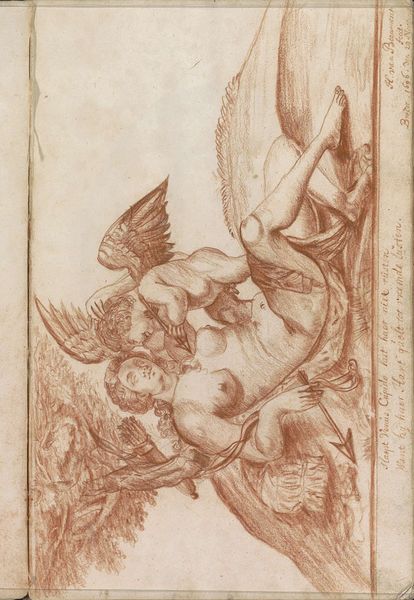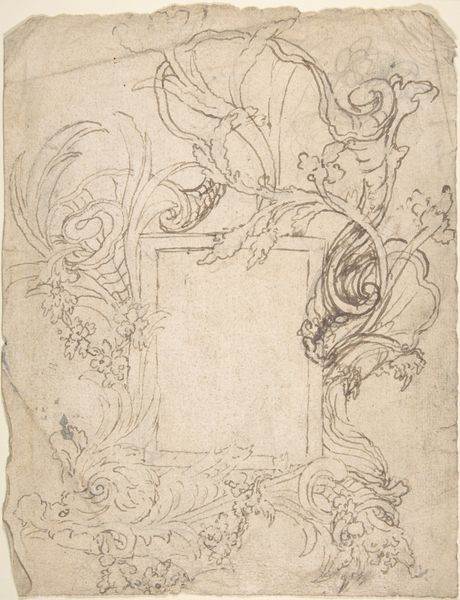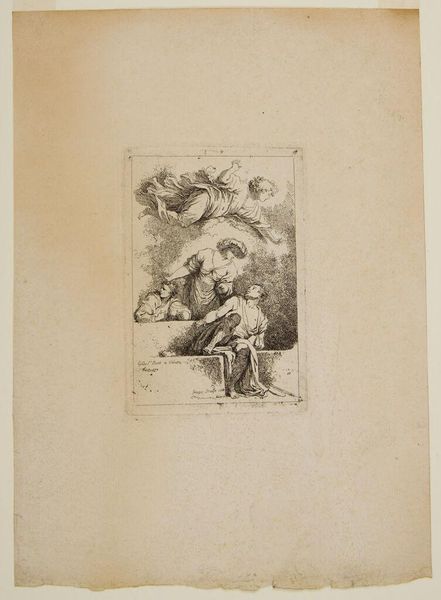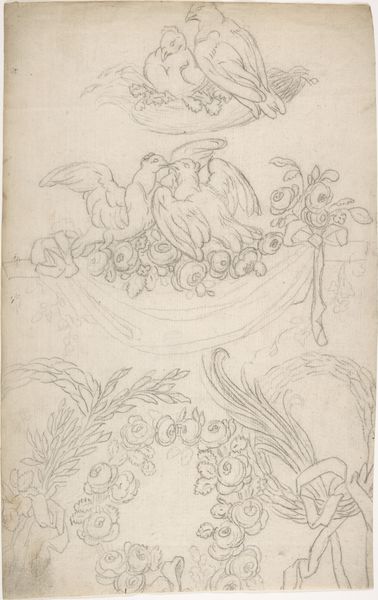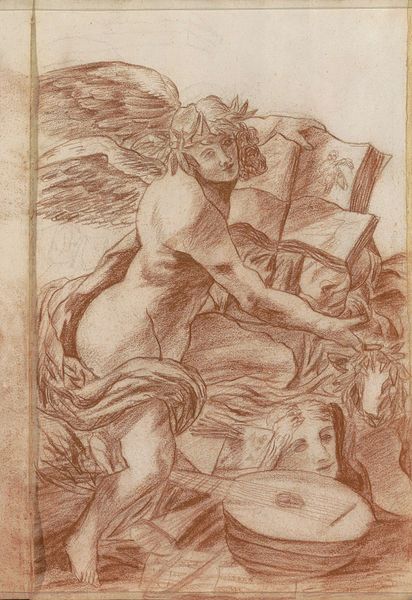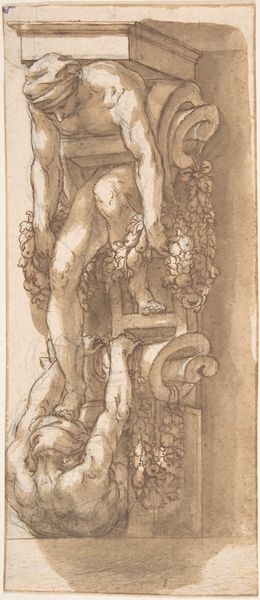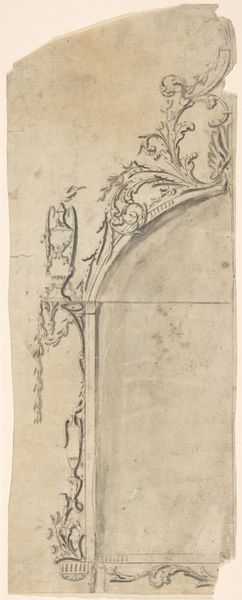
drawing, red-chalk
#
drawing
#
baroque
#
red-chalk
#
landscape
#
river
#
charcoal drawing
Copyright: Rijks Museum: Open Domain
Editor: So, this is Hendrick van Beaumont’s "Figures on a Bridge Over a River," created in 1696 using red chalk. It's a drawing, and what really strikes me is how dynamic the composition feels, even though it’s monochrome. What jumps out at you? Curator: It is an intriguing work. If we consider solely its formal properties, notice how the artist uses line and shadow to create depth and volume. The bridge's diagonal thrust opposes the soft, organic forms of the trees and water, thus creating tension and balance. Do you perceive this interplay between geometric and natural elements? Editor: I do see it now, the sharp angles of the bridge against the flowy waterfall below. It is almost like an intersection, where those shapes meet. Curator: Precisely. Note, also, how Beaumont employs the red chalk to its fullest extent. Observe the varying pressure applied to create a spectrum of tones, imbuing the work with a surprising amount of light and shadow, heightening the contrasts between forms. What meaning does the stark border contribute, within its composition? Editor: I hadn’t even noticed the framing border before. I see, though, how it contrasts even more so, due to those geometric shapes. Now the artwork makes it pop and stand out from other organic or monochrome drawings. Curator: Yes, so you understand that we need to see the artwork’s properties beyond the immediate natural appearance of trees and river. It reflects a careful artistic consideration and skill to use only those to make this balanced composition. Editor: Thanks, I see this artwork so differently now, and have realized so many composition features I have missed initially. Curator: A valuable observation, indeed, as we unravel visual relationships by understanding shapes, materiality, contrast, light, composition, balance, and frame within a piece.
Comments
No comments
Be the first to comment and join the conversation on the ultimate creative platform.


